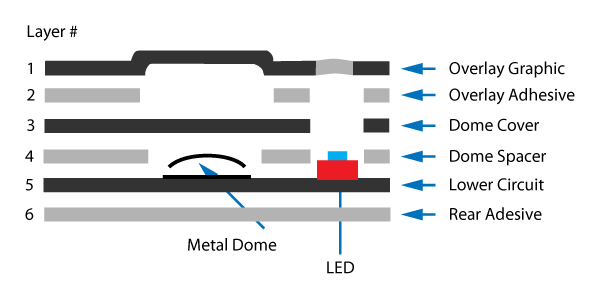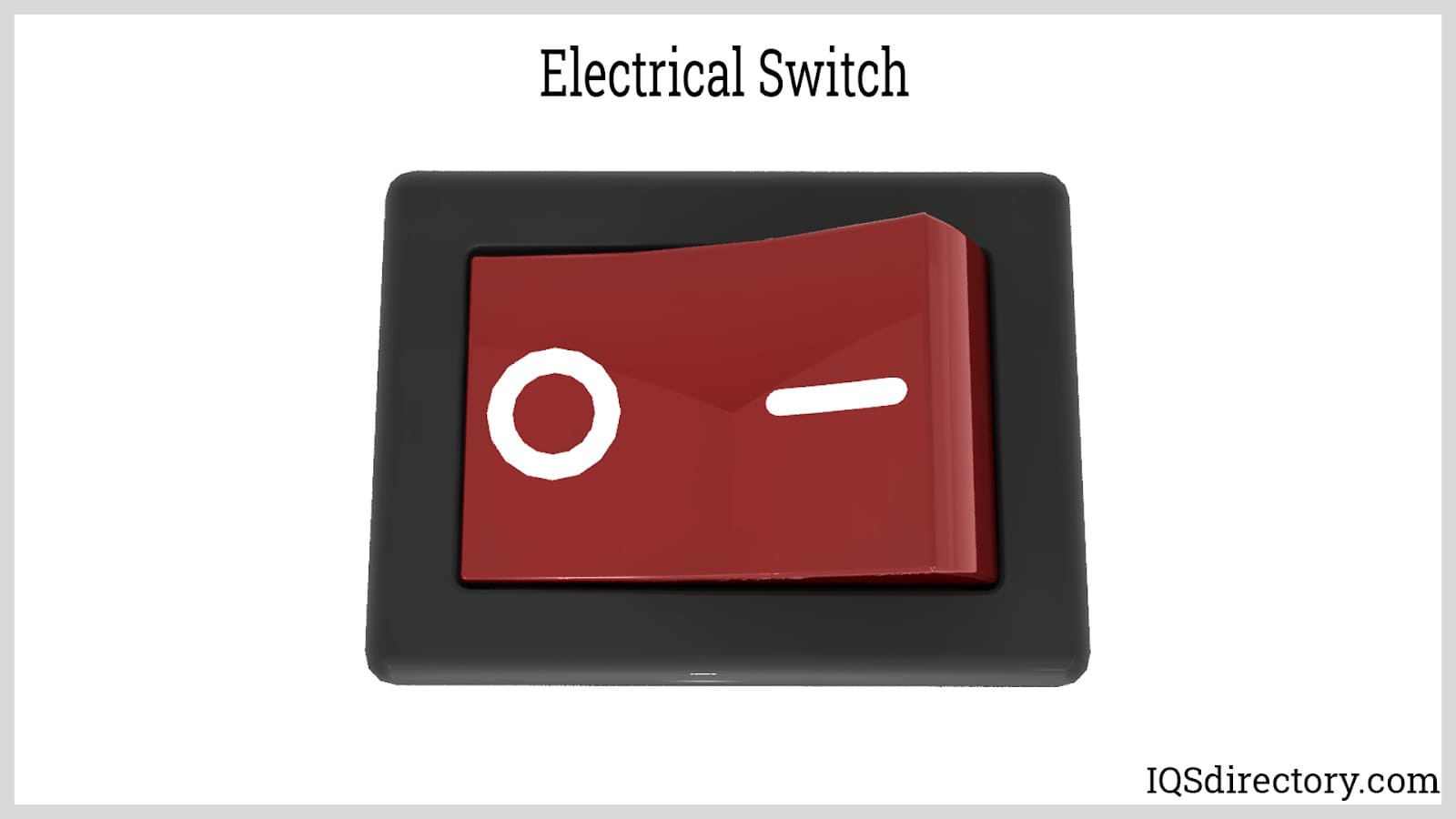The Manufacturing Refine Behind Membrane Switch Over: What You Need to Know
The manufacturing procedure behind membrane layer changes combines mindful style, material choice, and quality control. It starts with comprehending the intricacies of membrane layer button design and proceeds with numerous phases, including material selections and printing techniques. Each stage plays a vital role in making sure functionality and resilience. However, the intricacies of layer building and the strenuous testing requirements might reveal insights that are not immediately evident. What lies past these fundamental elements?
Comprehending Membrane Layer Switch Over Design
Although membrane layer buttons may appear basic at initial glance, their design involves elaborate factors to consider that guarantee performance and longevity. The design process begins with an extensive understanding of individual demands, consisting of the user interface's intended application and ecological elements. Comfort designs is a key element, as the design should help with simplicity of use while guaranteeing that tactile feedback meets user expectations.Moreover, the layering of components, such as visuals overlays, adhesive layers, and conductive traces, should be precisely engineered. membrane switch. This split arrangement not just influences the switch's responsiveness but likewise impacts its durability. Interest is provided to the sealing techniques used to secure versus wetness and dust, which can endanger efficiency. Additionally, design factors to consider expand to visual appeals, where color systems and aesthetic clearness enhance customer experience. Eventually, the design of membrane layer switches over balances functionality, customer experience, and toughness, making sure that they meet the needs of different applications efficiently
Materials Utilized in Membrane Switch Over Manufacturing
When picking products for membrane button production, it is important to consider both performance and longevity. The main products consist of polyester and polycarbonate films, which give versatility and strength. These movies are frequently covered with glue to assure proper bonding to substratums. Conductive inks, generally made up of silver or carbon, are crucial for developing electrical links within the switch, permitting for reputable operation.Additionally, a safety layer, such as a hard layer, is regularly applied to improve scrape resistance and durability. The choice of backing material, such as acrylic or foam, can substantially impact the switch's tactile feeling and total customer experience. Numerous environmental aspects, consisting of temperature level and humidity, must guide material choice to ensure peak efficiency in details applications. Ultimately, the best combination of products adds to the membrane layer switch's functionality and life expectancy, making educated options essential for producers.
The Printing Process: Creating Graphics and Text
The printing procedure in membrane layer button manufacturing plays a substantial role in producing premium graphics and message. Various graphic layout techniques are employed to guarantee visual appeal and functionality, while careful ink option methods are important for sturdiness and efficiency. Comprehending these aspects is essential for achieving best results in membrane switch design.
Graphic Layout Techniques
Graphic style methods play an important role in the printing procedure of membrane switches, as they specify just how graphics and text will inevitably show up on the final item. Efficient graphic layout entails the calculated use of formats, colors, and typefaces to boost readability and visual allure. Designers often make use of vector graphics for scalability, guaranteeing that photos stay sharp at numerous sizes. Additionally, interest to comparison and positioning is essential, as it influences customer interaction and visual quality. The unification of branding elements, such as logos, have to be handled with like maintain brand honesty. Overall, thoughtful graphic style strategies add significantly to the capability and attractiveness of membrane buttons, affecting user experience and product efficiency.
Ink Option Methods
Choosing the ideal ink is important for attaining the desired visual high quality and longevity in membrane switch production. Different ink kinds are utilized, including solvent-based, water-based, and UV-curable inks. Each type uses distinctive characteristics, such as adaptability, adhesion, and resistance to ecological aspects. Solvent-based inks are usually favored for their resilience and dynamic shades, while water-based inks are more eco friendly however may have limitations in adhesion. UV-curable inks provide rapid curing and durable performance. Additionally, shade matching strategies assure that the picked inks line up with style specs. Inevitably, the choice of ink must take into consideration variables such as application approach, substratum compatibility, and end-use demands to achieve superior results in membrane switch graphics and message.
Layer Building And Construction and Setting Up

Product Selection Process
A careful selection of materials is necessary in the production link procedure of membrane layer switches, as it straight affects functionality and sturdiness. The main products utilized consist of polyester, polycarbonate, and different conductive inks. Polyester is usually preferred for its excellent resistance to chemicals and abrasion, making it appropriate for severe atmospheres. Polycarbonate, on the other hand, offers remarkable clearness and effect resistance, which is useful for applications needing exposure and robustness. Conductive inks, commonly made up of silver or carbon, are crucial for producing trustworthy electric pathways. Additionally, the choice of adhesive materials impacts the general stability of the switch - membrane switch. Assessing elements such as ecological direct exposure, tactile comments, and aesthetic needs overviews producers in selecting the most effective products for their certain applications
Layer Bond Methods
Adhering layers in membrane layer switch construction is a vital procedure that ensures functionality and durability. Different attachment methods are utilized to protect optimal bonding between layers, which generally include using adhesives, heat, and stress. Pressure-sensitive adhesives (PSAs) are typically made use of for their simplicity of application and immediate bonding capacities. Furthermore, thermal bonding strategies can be applied, where warmth is made use of to trigger glue buildings, securing a solid bond. The choice of attachment method greatly depends on the products entailed and the certain application requirements of the membrane button. Proper positioning and consistent application of adhesives are necessary to prevent flaws, safeguarding the button operates effectively throughout its designated life-span.
Quality Assurance Actions
Guaranteeing quality assurance during the layer construction and setting up of membrane switches is essential for preserving efficiency and reliability. This process commonly involves a number of essential measures, including complete inspections at each stage of production. Suppliers utilize advanced testing techniques, such as peel examinations and bond analyses, to validate the honesty of layer bonds. Additionally, visual evaluations are carried out to determine any kind of issues in printing or product incongruities. Ecological conditions, such as temperature level and moisture, are carefully monitored to ensure optimal treating and bond. Normal calibration of devices helps maintain precise production criteria. By applying these top quality control procedures, makers can significantly minimize the danger of product failure, assuring that the last membrane switches meet the called for specs and client expectations.
Evaluating and Quality Assurance Actions

Technologies in Membrane Layer Switch Over Innovation
As developments in technology remain to progress, membrane buttons are profiting from cutting-edge advancements that enhance their capability and individual experience. One noteworthy innovation is the assimilation of capacitive touch technology, which permits more receptive and intuitive interface. This change not only enhances aesthetic appeals but likewise reduces mechanical deterioration, extending the life-span of the switches.Additionally, advancements in graphic overlay products have brought about improved longevity and resistance to environmental variables such as moisture and UV light. These products now provide boosted clarity and brightness, more elevating the aesthetic appeal.Furthermore, the unification of wise modern technology is transforming membrane changes right into interactive control panels, making it possible for connectivity with IoT gadgets. This connection cultivates a seamless individual experience, leading the way for applications in various markets, from medical care to customer electronics. Collectively, these advancements placement membrane switches as important parts in modern device style.
Often Asked Inquiries
The length of time Does the Membrane Change Manufacturing Refine Take?
The duration of the membrane switch production procedure can differ substantially. Factors such as complexity, products used, and production volume influence timelines, with common production ranging from a few days to a number of weeks for completion.
What Are the Typical Applications for Membrane Switches?
Membrane layer switches are commonly utilized in various industries, including automotive controls, household appliances, clinical tools, and customer electronic devices (membrane switch). Their convenience and resilience make them optimal for applications needing user-friendly interfaces and reliable efficiency in varied atmospheres
Can Membrane Switches Be Customized for Details Demands?

What Is the Life expectancy of a Regular Membrane Switch?
The life expectancy of a regular membrane switch varies, however normally, it varies their explanation from 1 to 5 million cycles. Variables such as use, environment, and material quality significantly influence toughness and general efficiency gradually.

Are Membrane Layer Switches Over Eco Pleasant?
The environmental friendliness of membrane changes differs. Some materials used may not be recyclable, while others can be eco-friendly. The total influence depends upon producing methods and materials, requiring careful factor to consider throughout option and disposal. The production process behind membrane layer switches over combines cautious design, product choice, and high quality control. It begins with recognizing the ins and outs of membrane button style and progresses via various stages, including product choices and printing strategies. When selecting materials for membrane button manufacturing, it is important to contemplate both efficiency and sturdiness. A careful option of materials is crucial in the manufacturing process of membrane layer switches, as it straight influences performance and durability. The selection of adhesion approach mostly depends on the products included and the details application demands of the membrane layer switch.